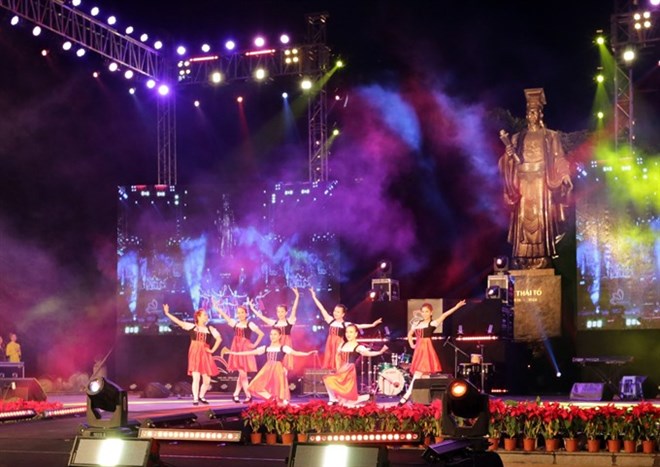
The Deutschland-Fest 2018: German Experiences in Hanoi kicked off on November 2 night around the Ly Thai To Statue next to Hoan Kiem Lake, with the attendance of German Ambassador to Vietnam Christian Berger and Hanoi People’s Committee Chairman Nguyen Duc Chung.

The Deutschland-Fest 2018: German Experiences in Hanoi kicked off
on November 2 in the capital city. (Photo: VNA)
The two-day festival will entertain locals and expats with a wide
range of activities including Learning about Bundesliga, the Brothers Grimm
Beer Festival and a fashion show by the Van Laack Company.
A photo exhibition displaying ten photos on the theme of Buddy Bears (a symbol
of Berlin) by Leica and another exhibition featuring photos about the
diplomatic relations between Vietnam and Germany will be also held.
Festival goers can also enjoy jazz performances and movies about Germany’s
tourism and culture. A pop rock performance by the band Isolation Berlin will
be held on November 3 night.
Addressing the event, Ambassador Christian Berger said the festival aims to
give Vietnamese people gain in insight into diverse aspects of Vietnam-Germany
links.
He added that the event marked a decade of a joint programme on teaching German
in Vietnamese schools. Around 4,000 Vietnamese students are studying German at
school with the support of this programme, and one third of schools where
German is taught are in Hanoi.
Chairman Chung stressed that Germany is one of Hanoi’s most important partners
with nearly 70 investment projects in different fields. Two-way trade between
Hanoi and Germany reaches about 900 million USD a year.
Source: VNA
The People’s Committee of Lac Son district held a ceremony on April 28 to receive the provincial relic certificate for the ancient rock carving site at Suoi Co stream, located in My Thanh commune.
A special music show titled "The country is in the fullness of joy” has been held at Hoa Binh Square in Hoa Binh city in celebration of the 50th anniversary of the liberation of the South and national reunification (April 30, 1975–2025).
The People's Committee of Lo Son commune, Tan Lac district, has organised the local annual traditional stream fishing festival on April 19 - 20.
As a land deeply intertwined with human history and Vietnam’s millennia-long journey of nation-building and defence, Hoa Binh is often revered for its epic tales and legends.
Residents of Hoa Binh boast a rich cultural identity, reflected in their unique language, traditional attire, customs, and folk melodies – described as "sweet as honey, clear as a mountain stream.”
Lac Son district’s Vu ban town held the 2025 Truong Kha temple festival on April 12–13 (the 15th–16th days of the third lunar month). Since its revival in 2019, the festival has been organised every three years, preserving valuable intangible heritage while meeting the community’s cultural and spiritual needs.



